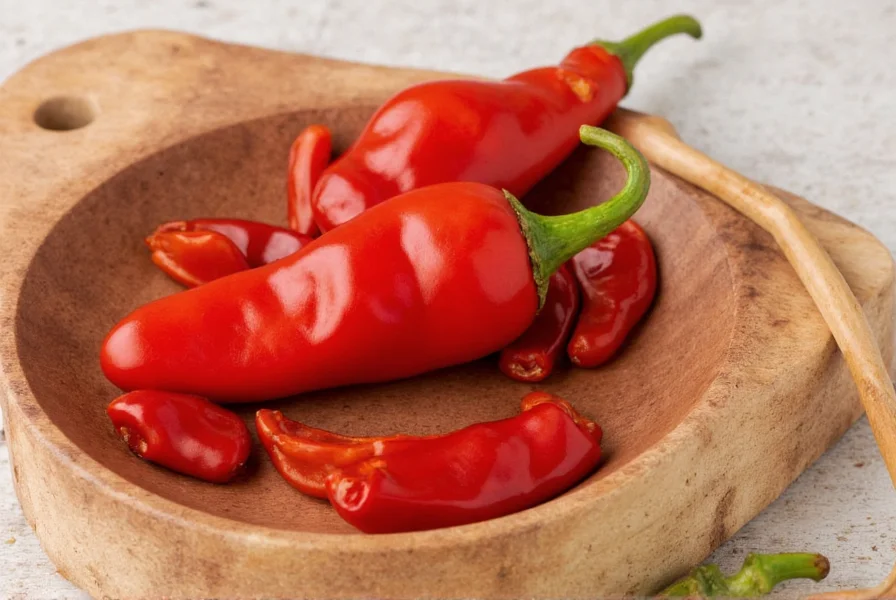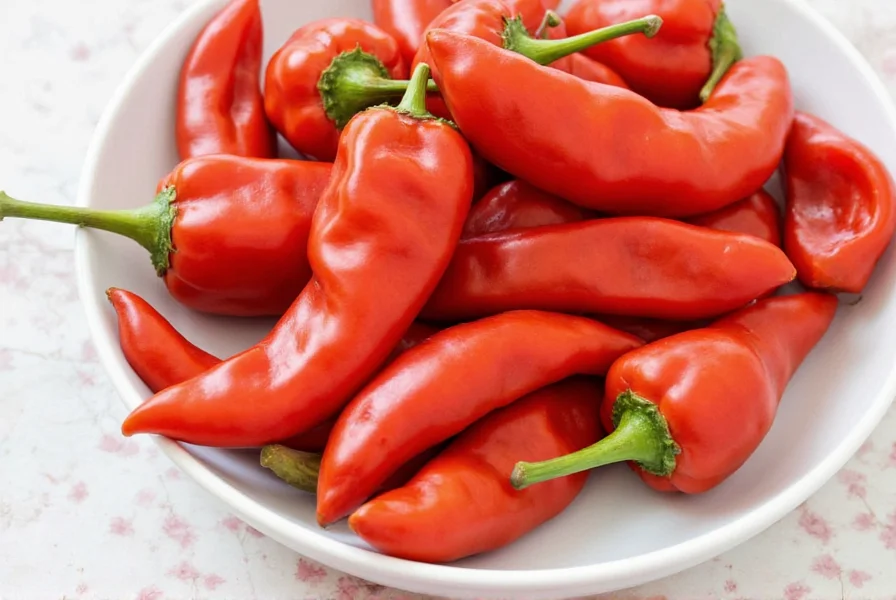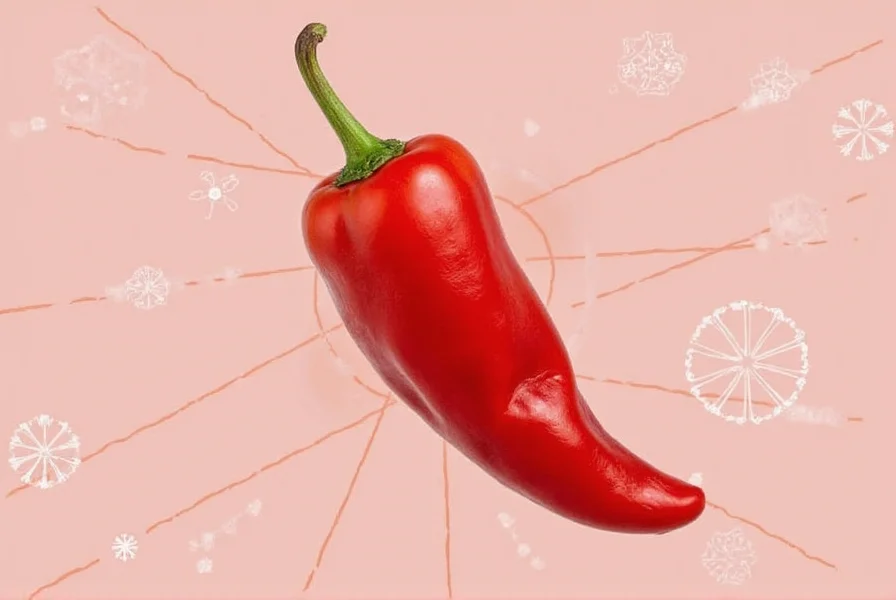Table of Contents
- What is China Pepper?
- Flavor Profiles & Ma-La Effect
- Cooking Tips with China Pepper
- Buying Guide for China Pepper
- Storing & Shelf Life
- Common Challenges (and How to Fix Them)
- Why You're Going to Love This Spice
- Frequently Asked Questions
- Conclusion
What is China Pepper? Understanding Sichuan Peppercorn
"China Pepper" is a common but often misleading term that actually refers to Sichuan peppercorn (also called Sichuan pepper or Chinese pepper), not chili peppers. This unique spice comes from the prickly ash tree and is famous for its distinctive numbing sensation ("ma" in Chinese) rather than heat. It's a fundamental ingredient in Sichuan cuisine and often used alongside chili peppers to create the "ma-la" (numbing and spicy) flavor profile.
Unlike chili peppers that provide heat through capsaicin, Sichuan peppercorns contain hydroxy-alpha-sanshool, which creates a tingling, numbing sensation on the tongue. This makes it completely different from chili peppers and essential for authentic Sichuan dishes like Mapo Tofu and Hot Pot.
Is China Pepper the Same as Chili Pepper?
No, this is a common misconception. China Pepper (Sichuan peppercorn) and chili peppers are completely different ingredients:
| Characteristic | Sichuan Peppercorn (China Pepper) | Chili Pepper |
|---|---|---|
| Botanical Family | Rutaceae (citrus family) | Solanaceae (nightshade family) |
| Primary Sensation | Numbing and tingling ("ma") | Heat and spiciness |
| Active Compound | Hydroxy-alpha-sanshool | Capsaicin |
| Typical Use | Essential for Sichuan "ma-la" flavor | Provides heat in various cuisines |
| Heat Level | 0 Scoville Units (no heat) | Varies from mild to extremely hot |

Flavor Profiles & Ma-La Effect: What Makes China Pepper Special?
China Pepper's unique numbing sensation is what makes it irreplaceable in Chinese cuisine. Here's how different varieties create distinct experiences:
| Type of China Pepper | Flavor Notes | Best For | Appearance |
|---|---|---|---|
| Red Sichuan Peppercorn | Rosy, floral, with moderate numbing | Stir-fries, braises, general Sichuan dishes | Bright red, small husks |
| Green Sichuan Peppercorn | Citrusy, fresh, intense numbing | Hot pot, seafood dishes, modern fusion cuisine | Greenish hue, plumper husks |
| Heavenly Fragrance Peppercorn | Complex, aromatic, subtle numbing | Delicate sauces, soups, high-end dishes | Dark brown, smaller size |
| Mixed Sichuan Peppercorn | Balanced numbing with floral notes | General purpose, all-around use | Red and green mixed |

Pro Tip: Understanding "Ma-La"
- "Ma" refers to the numbing sensation from Sichuan peppercorn
- "La" refers to the spiciness from chili peppers
- True Sichuan cuisine uses both ingredients together to create balanced flavor profiles
- Never substitute Sichuan peppercorn with chili peppers - they create completely different sensations
Cooking Tips with China Pepper: Use It Like a Pro
Mastering Sichuan peppercorn requires understanding its unique properties. Here are essential techniques:
1. Toast Properly for Maximum Flavor
Heat a dry pan over medium-low flame and toast whole peppercorns for 1-2 minutes until fragrant. Avoid high heat - Sichuan peppercorns burn easily. Let cool before grinding for best results.
2. Grind Just Before Use
Whole peppercorns retain flavor much longer than ground. Grind only what you need immediately before cooking for maximum aroma and numbing effect.
3. Use in Combination with Chili Peppers
For authentic "ma-la" flavor, combine Sichuan peppercorn with dried red chilies. The classic ratio is 1 part Sichuan peppercorn to 2 parts chili peppers for balanced numbing and heat.
4. Infuse Oils for Versatile Use
Add whole peppercorns to neutral oil and heat gently (do not boil). Let cool completely before straining. This infused oil adds depth to dressings, marinades, and dipping sauces.

Buying Guide for China Pepper: What to Look For
When purchasing authentic Sichuan peppercorn, these tips will help you find quality products:
| Type | Look For | Storage | Best Brands |
|---|---|---|---|
| Whole Red Peppercorns | Bright red color, uniform size, strong citrus aroma | Airtight container in cool, dark place | Spicery, Sichuan Tianfu, Yunnan Spices |
| Whole Green Peppercorns | Vibrant green hue, plump texture, fresh citrus scent | Refrigerate in sealed container | Spicery, Yunnan Mountain Herbs |
| Ground Sichuan Pepper | Vibrant color, no clumping, strong aroma | Sealed jar away from light and heat | Spicery, Mountain Rose Herbs |
| Pre-Mixed Ma-La Seasoning | Clear ingredient list, no artificial additives | Refrigerate after opening | Lao Gan Ma, Lee Kum Kee |
Recommended Products
- Spicery Sichuan Peppercorns: Premium whole peppercorns with consistent quality and authentic flavor profile.
- Yunnan Mountain Herbs Green Sichuan Peppercorns: Exceptional freshness and intense citrus notes.
- Mountain Rose Herbs Ground Sichuan Pepper: Perfect for quick use in sauces and rubs.
- Lee Kum Kee Ma-La Seasoning: Authentic blend for quick "ma-la" flavor in stir-fries and hot pot.
Storing and Shelf Life: Keep It Fresh Longer
To maintain the distinctive numbing sensation and aroma of China Pepper:
- Whole peppercorns: Store in airtight container in cool, dark place. Lasts 1-2 years when properly stored.
- Green peppercorns: Refrigerate in sealed container. Best used within 6 months for optimal freshness.
- Ground pepper: Store in opaque container away from light. Use within 3-4 months for best flavor.
- Freezing: Whole peppercorns can be frozen for up to 3 years without significant quality loss.
Common Challenges and How to Fix Them
Here's how to solve common issues when using China Pepper:
Problem: My Dish Lacks Numbing Effect
Solution: Ensure you're using authentic Sichuan peppercorn (not chili pepper). Toast whole peppercorns before grinding for maximum flavor. Use fresh product - old peppercorns lose their numbing properties.
Problem: The Numbing Sensation Is Too Strong
Solution: Reduce the amount used. Remember that a little goes a long way - start with 1/4 teaspoon per serving. Balance with sweet elements like honey or rock sugar.
Problem: Bitter Taste After Toasting
Solution: Toast over low heat for only 1-2 minutes. Remove from heat immediately when fragrant. Over-toasting causes bitterness.
Why You're Going to Love This Spice
China Pepper (Sichuan peppercorn) offers a culinary experience unlike any other spice. Its unique numbing sensation creates complex flavor layers that complement heat without overwhelming it. Beyond its distinctive taste, it contains antioxidants and has been used in traditional Chinese medicine for digestive health. Whether you're making authentic Sichuan dishes or experimenting with fusion cuisine, China Pepper opens doors to new flavor dimensions.
Frequently Asked Questions About China Pepper
What exactly is China Pepper?
China Pepper refers to Sichuan peppercorn, which comes from the prickly ash tree. It's not a chili pepper but a unique spice known for its numbing sensation ("ma" in Chinese), distinct from the heat of chili peppers.
Is China Pepper spicy like chili peppers?
No, China Pepper (Sichuan peppercorn) has 0 Scoville Units - it doesn't create heat. Instead, it produces a tingling, numbing sensation on the tongue. This is completely different from the spicy heat of chili peppers, which comes from capsaicin.
Can I substitute China Pepper with other spices?
No, China Pepper's unique numbing effect cannot be replicated by other spices. However, for dishes requiring "ma-la" flavor, you can use a combination of Sichuan peppercorn for the numbing effect and chili peppers for heat. Never substitute Sichuan peppercorn with chili peppers - they create completely different sensations.
Why do some China Pepper dishes have a numbing sensation?
The numbing sensation comes from hydroxy-alpha-sanshool in Sichuan peppercorns, which stimulates nerve endings differently than capsaicin in chili peppers. This creates a unique tingling, vibrating sensation that's central to "ma-la" flavor in Sichuan cuisine.
How can I reduce the numbing effect of China Pepper?
Reduce the amount used, toast lightly (over-toasting can increase bitterness), or balance with sweet elements like honey or rock sugar. For finished dishes, dairy products can help neutralize the sensation if it's too strong.
Are China peppers and Sichuan peppers the same thing?
Yes, "China Pepper" is another name for Sichuan peppercorn. However, "Sichuan pepper" is the more accurate term. Both refer to the same spice from the prickly ash tree, not to be confused with chili peppers.
What are the health benefits of China Pepper?
Sichuan peppercorn contains antioxidants and has been used in traditional Chinese medicine for digestive health. It may help stimulate saliva production and improve circulation. However, it should be consumed in moderation as part of a balanced diet.
Conclusion: Master the Art of China Pepper
Understanding China Pepper (Sichuan peppercorn) is key to unlocking authentic Sichuan cuisine. Its unique numbing sensation creates complex flavor layers that complement heat without overwhelming it. Remember: China Pepper isn't spicy - it's numbing. When used correctly alongside chili peppers, it creates the magical "ma-la" experience that defines Sichuan cooking.
Whether you're a professional chef or home cook, mastering China Pepper opens doors to new culinary dimensions. Start with small amounts, toast properly, and balance with other ingredients for the perfect "ma-la" harmony. Happy cooking!










 浙公网安备
33010002000092号
浙公网安备
33010002000092号 浙B2-20120091-4
浙B2-20120091-4